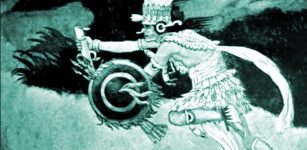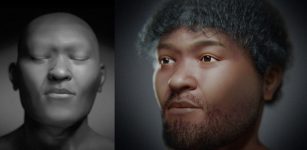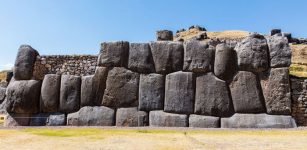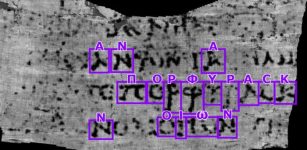Ancient Scandinavians Never Spoke Of Themselves As Vikings – Here Is Why
Ellen Lloyd - AncientPages.com - If Vikings were alive today, they would be surprised and perhaps even a little flattered to see how the world has taken an interest in their history. The Vikings are more popular than ever, and people are fascinated with everything these Norse warriors accomplished, and even failures in some cases.
When we talk about the Vikings, we say they were originally from Scandinavia, which, of course is true. However, did you know that very few people in ancient Scandinavia spoke of themselves as Vikings?
Being a Viking was a profession. Credit: Nejron Photo - Adobe Stock
The origin of the word Viking is still uncertain, and it would seem the "word is a historians' revival; it was not used in Middle English, but it was reintroduced from Old Norse vikingr "freebooter, sea-rover, pirate, viking," which usually is explained as meaning properly "one who came from the fjords," from vik "creek, inlet, small bay." 1
To understand why ancient Scandinavians did not refer to themselves as Vikings, one must remember the meaning of the word Viking. In Old Norse, an old Scandinavian language, the word appears as "vikingr", which designates a person, while "viking" designates a practice.
According to Jan Bill, a professor of Viking archaeology and curator of Oslo's Viking Ship Museum, "the Scandinavians never spoke of themselves as Vikings, as an identity for anybody Scandinavian. The word rather meant an activity, to go raiding or a person who was doing that."
In modern times, we forget the true meaning of this word. We frequently use the word 'Viking' to describe anybody Scandinavian from the Viking period.
As much as historians try to set the records straight, many great Viking misconceptions are still perpetuated.
Contrary to what many believe today, the Vikings did not wear helmets with horns or drink from skull cups. Very few helmets from the Viking Age have been unearthed, but one thing is certain: none of the discovered ones had horns.
The horns on the Viking helmet were simply a "mistake" is attributed to costume designer Carl Emil Doepler, who in 1876 added horns to the warriors' helmets in a performance of Richard Wagner's Ring Cycle opera, inspired by Nordic mythology." 2
It's often said that Vikings were dirty and did not pay attention to their appearance. Few things can be further from the truth. Archaeological discoveries reveal that Vikings were cleaner than most and they were rather vain.
Vikings did plunder and used their magnificent longships to reach distant lands. The Vikings' ships were the greatest technical and artistic achievement of the European Dark Ages. Without these great ships, the Viking Age would never have happened.
Many Viking ships were equipped with carved dragonheads on top of the stem, while the stern was often shaped like a dragon's tail. The dragon was meant to frighten the enemy, and it was a powerful Viking symbol.
"The word "drakkar" is sometimes purported to be a Viking-era word for a longship, which occasionally featured an ornamental dragon on the bow.
But some historians insist that the term is as recent as the 19th century, inspired by the modern Swedish word for dragon, "drake" in singular and "drakar" in plural.
That word is similar, but not exactly the same, as the word used in Old Norse.
"There are actually seven instances of ships being called 'dreki', or 'drekar' in plural, in poems from the Viking Age," says Jan Bill.
"It was not a technical term, though, rather poetic."
A Viking warrior. Credit: Fotokvadrat - Adobe Stock
Historians do, however, agree that light longships, powered by oars and/or sails, were known for their speed and flexibility, capable of crossing oceans and, thanks to their shallow draught, sailing upriver. 2
As much as the Vikings are today remembered for plundering, we must not forget that they were also skillful traders who established a network of contacts from the Caspian Sea to Greenland.
During the Viking Age, organizing and financing trading possibilities was necessary. This was done through something known as Félag, best described as an ancient Viking company.
Commerce played a vital role in the lives of Vikings, who established several important trading centers that many foreigners visited.
One of them was Kaupang, a flouring Viking market and production center for North Sea trade.
Although it was not as effective as its two Nordic "sister cities," Birka in Sweden and Hedeby in southern Jutland (now Schleswig, Germany), Kaupang was a well-known and extremely effective hub for trade and production, a few decades into the 900s.
Ancient Arabic coins and other discovered artifacts reveal Vikings traded with people from distant lands.
To an ordinary person in ancient Scandinavia, Vikings' life must have been rather exotic. Being a simple farmer, baker, or perhaps a blacksmith, it was difficult for an individual in ancient Scandinavia to compare himself with a Viking because being a Viking was a profession he did not share.
This is why ancient Scandinavians never spoke of themselves as Vikings.
Updated on January 21, 2024
Written by Ellen Lloyd – AncientPages.com
Copyright © AncientPages.com All rights reserved. This material may not be published, broadcast, rewritten or redistributed in whole or part without the express written permission of AncientPages.com
Expand for referencesMore From Ancient Pages
-
 Tezcatlipoca: Enigmatic Aztec God Who Looked Inside People’s Hearts And Observed Their Deeds On Earth
Aztec Mythology | Jul 22, 2021
Tezcatlipoca: Enigmatic Aztec God Who Looked Inside People’s Hearts And Observed Their Deeds On Earth
Aztec Mythology | Jul 22, 2021 -
 Face Of Egyptian Man Who Lived 35,000 Years Ago Reconstructed
Archaeology | Apr 7, 2023
Face Of Egyptian Man Who Lived 35,000 Years Ago Reconstructed
Archaeology | Apr 7, 2023 -
 World’s Oldest Known Cave Painting – 45,000-Year-Old Depiction Of Wild Pig Discovered At Leang Tedongnge Cave
Archaeology | Jan 14, 2021
World’s Oldest Known Cave Painting – 45,000-Year-Old Depiction Of Wild Pig Discovered At Leang Tedongnge Cave
Archaeology | Jan 14, 2021 -
 Cyclopean Fortress Of Sacsayhuamán – ‘Impossible’ Ancient Technology In Peru
Featured Stories | Apr 10, 2017
Cyclopean Fortress Of Sacsayhuamán – ‘Impossible’ Ancient Technology In Peru
Featured Stories | Apr 10, 2017 -
 Major Breakthtrough – Ancient Herculaneum Scroll Deciphered For The First Time
Artifacts | Oct 20, 2023
Major Breakthtrough – Ancient Herculaneum Scroll Deciphered For The First Time
Artifacts | Oct 20, 2023 -
 Supernatural Beliefs Have Featured In Every Society Throughout History: New Research Helps Explain Why
Featured Stories | Apr 5, 2023
Supernatural Beliefs Have Featured In Every Society Throughout History: New Research Helps Explain Why
Featured Stories | Apr 5, 2023 -
 Unusual 2,500-Year-Old Face Urns Reveal Garments, Appearance And Jewelry Of Prehistoric People
Archaeology | Nov 11, 2017
Unusual 2,500-Year-Old Face Urns Reveal Garments, Appearance And Jewelry Of Prehistoric People
Archaeology | Nov 11, 2017 -
 Incredibly Rare 3,500-Year-Old Wooden Spade Found In English Trench
Artifacts | Oct 30, 2024
Incredibly Rare 3,500-Year-Old Wooden Spade Found In English Trench
Artifacts | Oct 30, 2024 -
 1,200-Year-Old Soap ‘Factory’ Unearthed In Beduin City Of Rahat In Israel
Archaeology | Aug 18, 2020
1,200-Year-Old Soap ‘Factory’ Unearthed In Beduin City Of Rahat In Israel
Archaeology | Aug 18, 2020 -
 Hidden Details In Ancient Egyptian Tomb Paintings Revealed By Chemical Imaging
Featured Stories | Jul 28, 2023
Hidden Details In Ancient Egyptian Tomb Paintings Revealed By Chemical Imaging
Featured Stories | Jul 28, 2023 -
 200,000-Year-Old Stone Engravings Found In Marbella Could Rewrite The History Of Prehistoric Art
Archaeology | Mar 17, 2025
200,000-Year-Old Stone Engravings Found In Marbella Could Rewrite The History Of Prehistoric Art
Archaeology | Mar 17, 2025 -
 Watlington Viking Hoard May Re-Write History Of England
Archaeology | Dec 11, 2015
Watlington Viking Hoard May Re-Write History Of England
Archaeology | Dec 11, 2015 -
 Huge Never-Before-Seen Ancient Petroglyphs Discovered In Kville, Bohuslän, Sweden
Archaeology | May 18, 2023
Huge Never-Before-Seen Ancient Petroglyphs Discovered In Kville, Bohuslän, Sweden
Archaeology | May 18, 2023 -
 Vijayanagara – ‘City Of Devas – Shining Ones’ – Place Where Mythology And History Coexist
Civilizations | Jun 21, 2015
Vijayanagara – ‘City Of Devas – Shining Ones’ – Place Where Mythology And History Coexist
Civilizations | Jun 21, 2015 -
 Castlerigg Stone Circle: One Of Britain’s Most Important And Earliest Stone Circles
Featured Stories | Apr 16, 2019
Castlerigg Stone Circle: One Of Britain’s Most Important And Earliest Stone Circles
Featured Stories | Apr 16, 2019 -
 New Discovery: Fragments Of Pyramid Dated To 13th Dynasty Discovered In Dahshur Necropolis
Archaeology | Apr 3, 2017
New Discovery: Fragments Of Pyramid Dated To 13th Dynasty Discovered In Dahshur Necropolis
Archaeology | Apr 3, 2017 -
 Mysterious Fossilized Antarctic Forest May Offer Evidence Of The Great Flood – But Some Facts Speak Against This Theory
Archaeology | Dec 27, 2017
Mysterious Fossilized Antarctic Forest May Offer Evidence Of The Great Flood – But Some Facts Speak Against This Theory
Archaeology | Dec 27, 2017 -
 Acta Diurna: World’s First Newspaper Appeared In 131 B.C
Ancient History Facts | Jun 10, 2019
Acta Diurna: World’s First Newspaper Appeared In 131 B.C
Ancient History Facts | Jun 10, 2019 -
 1.5-Million-Year-Old Hominin Fossil Reveals Missing Link In Human Evolution
Archaeology | Mar 16, 2022
1.5-Million-Year-Old Hominin Fossil Reveals Missing Link In Human Evolution
Archaeology | Mar 16, 2022 -
 Heimdallr (Heimdall): Norse God That ‘Illuminates The World’ And Guards The Rainbow Bridge Bifrost In Asgard
Norse Mythology | Feb 6, 2016
Heimdallr (Heimdall): Norse God That ‘Illuminates The World’ And Guards The Rainbow Bridge Bifrost In Asgard
Norse Mythology | Feb 6, 2016


